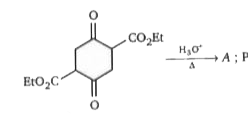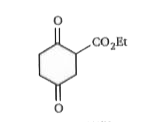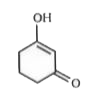Write all the products obtained by treatment of n-hexane with diazomethane.
To determine the products obtained by the treatment of n-hexane with diazomethane, we will follow a systematic approach:
Step 1: Understand the Reactants
- n-Hexane: The molecular formula of n-hexane is C6H14. Its structure can be represented as:
CH3−CH2−CH2−CH2−CH2−CH3
- Diazomethane: The molecular formula of diazomethane is CH2N2. Under certain conditions (like sunlight), diazomethane decomposes to form a reactive species known as carbene (CH2).
Step 2: Formation of Carbene
- When diazomethane (CH2N2) is treated with sunlight, it decomposes to produce nitrogen gas (N2) and carbene (CH2):
CH2N2→N2+CH2(Carbe≠)
Step 3: Reaction of Carbene with n-Hexane
- Carbene is a highly reactive species that can add to alkanes. In this case, carbene can attack the n-hexane at various positions, resulting in different products.
Step 4: Identify Possible Products
1. Carbene attacks the terminal carbon (C1):
- The reaction will remove one hydrogen from the terminal carbon and form a new bond with the carbene, resulting in:
CH3−CH2−CH2−CH2−CH2−CH2−CH3(Heptane)
- Product: Heptane (C7H16)
2. Carbene attacks the second carbon (C2):
- The reaction will remove one hydrogen from the second carbon and form a new bond with the carbene, resulting in:
CH3−CH−CH2−CH2−CH2−CH3
- Product: 2-Methylhexane (C7H16)
3. Carbene attacks the third carbon (C3):
- The reaction will remove one hydrogen from the third carbon and form a new bond with the carbene, resulting in:
CH3−CH2−CH−CH2−CH2−CH3
- Product: 3-Methylhexane (C7H16)
Step 5: Summary of Products
- The products formed from the treatment of n-hexane with diazomethane are:
1. Heptane (C7H16)
2. 2-Methylhexane (C7H16)
3. 3-Methylhexane (C7H16)
Conclusion
- The total number of distinct products (isomers) formed is three.
---
- n-Hexane: The molecular formula of n-hexane is C6H14. Its structure can be represented as:
CH3−CH2−CH2−CH2−CH2−CH3
- Diazomethane: The molecular formula of diazomethane is CH2N2. Under certain conditions (like sunlight), diazomethane decomposes to form a reactive species known as carbene (CH2).
- When diazomethane (CH2N2) is treated with sunlight, it decomposes to produce nitrogen gas (N2) and carbene (CH2):
CH2N2→N2+CH2(Carbe≠)
- Carbene is a highly reactive species that can add to alkanes. In this case, carbene can attack the n-hexane at various positions, resulting in different products.
1. Carbene attacks the terminal carbon (C1):
- The reaction will remove one hydrogen from the terminal carbon and form a new bond with the carbene, resulting in:
CH3−CH2−CH2−CH2−CH2−CH2−CH3(Heptane)
- Product: Heptane (C7H16)
- The reaction will remove one hydrogen from the second carbon and form a new bond with the carbene, resulting in:
CH3−CH−CH2−CH2−CH2−CH3
- Product: 2-Methylhexane (C7H16)
- The reaction will remove one hydrogen from the third carbon and form a new bond with the carbene, resulting in:
CH3−CH2−CH−CH2−CH2−CH3
- Product: 3-Methylhexane (C7H16)
- The products formed from the treatment of n-hexane with diazomethane are:
1. Heptane (C7H16)
2. 2-Methylhexane (C7H16)
3. 3-Methylhexane (C7H16)
- The total number of distinct products (isomers) formed is three.
Topper's Solved these Questions
- BOOK - AAKASH INSTITUTE ENGLISHCHAPTER - HYDROCARBONSEXERCISE - SECTION-J AAKASH CHALLENGERS QUESTIONS5videos
HYDROCARBONS
- BOOK - AAKASH INSTITUTE ENGLISHCHAPTER - HYDROCARBONSEXERCISE - Try yourself78videos
HYDROCARBONS
- BOOK - AAKASH INSTITUTE ENGLISHCHAPTER - HYDROCARBONSEXERCISE - SECTION-H MULTIPLE TRUE-FALSE TYPE QUESTIONS2videos
HYDROCARBONS
- BOOK - AAKASH INSTITUTE ENGLISHCHAPTER - HALOALKANES AND HALOARENES EXERCISE - ASSIGNMENT SECTION -D15videos
HALOALKANES AND HALOARENES
- BOOK - AAKASH INSTITUTE ENGLISHCHAPTER - HYDROGENEXERCISE - ASSIGNMENT (SECTION - D) (Assertion-Reason Type question)15videos
HYDROGEN
Similar Questions
Knowledge Check
- Question 1 - Select One
 , Product obtained is :A
, Product obtained is :A B
B C
C DNone of these
DNone of these - Question 2 - Select One
 , Products obtained are : ARacenicBDiastereomersCG.IDPositional isomers
, Products obtained are : ARacenicBDiastereomersCG.IDPositional isomers - Question 3 - Select One
 Product/s obtained is/are :ADiastereomersBMesoCRacemicDOptically pure enantiomers
Product/s obtained is/are :ADiastereomersBMesoCRacemicDOptically pure enantiomers





 . The major product obtained is
. The major product obtained is 